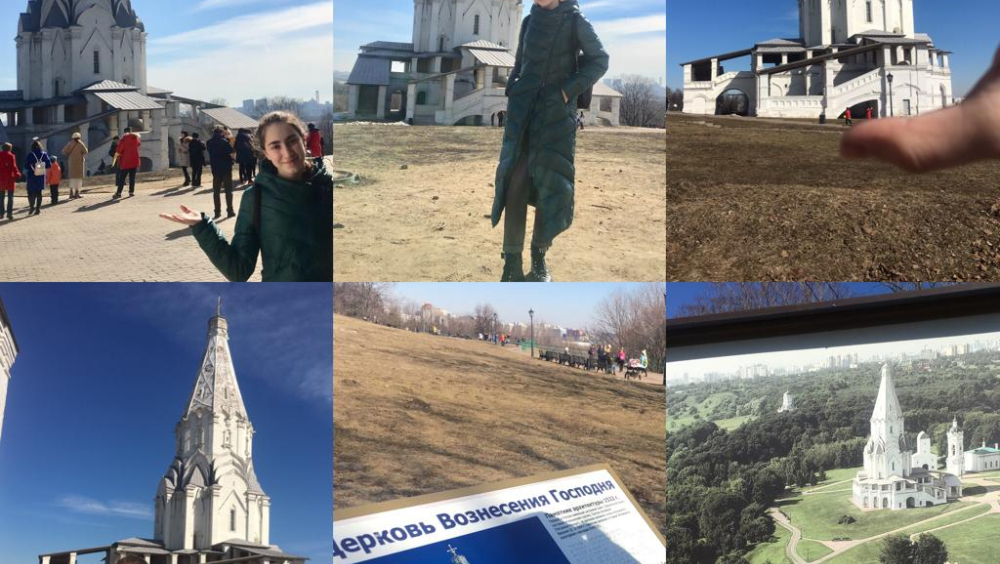Italian cultural trace in the Russian middle ages
Overview
Итальянский культурный след в русском средневековье.
С малых лет меня родители водили гулять в парк Коломенское. Мое внимание всегда привлекала красота и величие белого храма. Чуть позже я узнала что это церковь Вознесения Христова, создание и последующая история которой связанны с русским царем Иваном Грозным. Церковь вознесения - первый шатровый древнерусский храм данной местности. Возник он на правом берегу Москвы реки в первой трети 16-ого века по указанию Великого князя Московского - Василия третьего ( отца Ивана Грозного).
Храм является олицетворением мольбы стареющего Князя Василия третьего и его второй супруги, молодой Елены Глинской, о доравании долгожданного наследника. И сразу по окончании двух лет, выпрошенных Василием III для очищения от греха двоежёнства, к Папе Римскому явились послы великого князя. По его просьбе Климент VIIотпустил в Москву архитектора Петра Франческо Анибале, которого звали в России Петрок Малый. В Москву архитектор приехал в начале лета 1528 года и через 2-3 недели уже приступил к работе. Поэтому фундамент церкви устроен по венициански. В храме нет внутренних опор, кровля опирается только на стены. Высота ее 42,5 метра, поэтому стены толщиной в 3 метра. Из-за этого внутри она кажется небольшой. В храме уникальная окустика, говорить можно только шепотом, иначе оглушишь собеседника. Решение со светом тоже было удивительно продуманно. Окна прорезаны так, чтобы максимально захватывать солнечные лучи, и храм всегда зарит светом. Прежде в русской архитектуре не встречались такие элементы декоративного убранства. Килевидные арки типичные для позднего средневековья Ренессанса Италии, особенно заостренные треугольники готических глухих арок. Строительство храма закончили на пятый летний сезон. Строили тогда только летом.
Из официальной летописи известна дата освещения храма 3 сентября1532 года. Это событие стало настоящим праздником для великокняжеской семьи, двора и церкви. Освещение происходило в присутствии Вани -будущего царя, Ивана Грозного. Три дня в Коломенском шёл торжественный пир в честь этого события.
С момента создания церкви Вознесения сформировалась особое к ней отношение. Великие князья и русские цари всегда заботились об украшениях храма заказывая иконы, иконостасы. На увеличенных копиях миниатюр использованных в оформлении ветрин изображены сцены освещения и украшения церкви, а также пир в честь этого торжества.
Эта церковь столь значима, что входит в Москве в тройку объектов охраняемых ЮНЕСКО. Она была выбрана как объект свидетельствующий о взаимодействии художественных традиций -византийской, романской, готической и древнерусской, и связавший их воедино в определённом культурном пространстве. Тем самым она является зримым воплощением культурного взаимодействия между Россией и Европой в рамках архитектуры европейского Ренессанса.
[ENGLISH VERSION] Italian cultural trace in the Russian middle ages.
Ever since I was little my parents took me to ”Kolomenskoye” park. I’ve always been captured by the beauty and greatness of the white church. Later I learned that it was the Church of the Ascension, which’s creation and history was closely linked to Russian Tsar Ivan Terrible (Grozny).
The Church of the Ascension was the first tent-roof stone church in this area.
It appeared on the right bank of the Moskva River in the first third of the 16th century on the orders from the Vassily III Ivanovoch, the Grand Prince of Moscow (the father of Ivan the Terrible). The temple has become the metaphor of the aging Prince Vassily the Third and his second wife, young Elena Glinskaya, praying to God for the long-awaited heir. In two years elicited by Vasily III for clarification from a bigamy sin, the ambassadors of the Grand Prince came to the Pope. At its request Pope Kliment VII sent to Moscow the architect Pietro Francesco Anibale who was called in Russia Petrok Maly (Little Petrok). The architect arrived to Moscow at the beginning of summer of 1528 and in 2-3 weeks already started work. Therefore the base of church is arranged in Venetian style. In the temple there are no internal support, the roof leans only on walls.
The Height of the building is 42.5 meters, while the walls 3 meters thick. Because of this , the church from the inside looks small. The acoustics are unique In the temple. It is only possible to speak in a whisper, otherwise you will deafen the others.
The decision with light was also unique. The windows of the temple were cut through in particular way, so that as much sunshine as possible covered the interiors, and the temple has always been bright and light. Such elements of decorations had never been noticed in Russian architecture before. Keeled arches and especially pointed triangles of Gothic deaf arches are typical for the late Middle Ages of the Renaissance of Italy. The Construction of the temple was finished on the fifth summer season(the construction works could only be held in the summer then).
From the official chronicle we know that the temple was sanctified on September 3, 1532. This event became the real holiday for the royal family, the Court and the Church. The sanctification was happening in the presence of Vanya - future tsar, Ivan the Terrible. Three days in Kolomna there was a solemn feast in honor of this event. Since its establishment , the Church of the Ascension took special place in peoples hearts. Grand Tsars had always been concerned about the decorations of the temple, ordering icons and iconostases.
The miniatures used for the window dressing display the scenes of sanctification and decoration of the temple, as well as the scenes of feast in honor of these events.
This Church is of such a significance, that it was included into UNESCO World Heritage List.
It was chosen as an object, which represents mutual interaction of different artistic traditions: Byzantine, Roman, Gothic and Ancient Russian all of them united in one cultural space. Thus, it is a visible embodiment of cultural interaction between Russia and Europe within the framework of the European Renaissance architecture.
